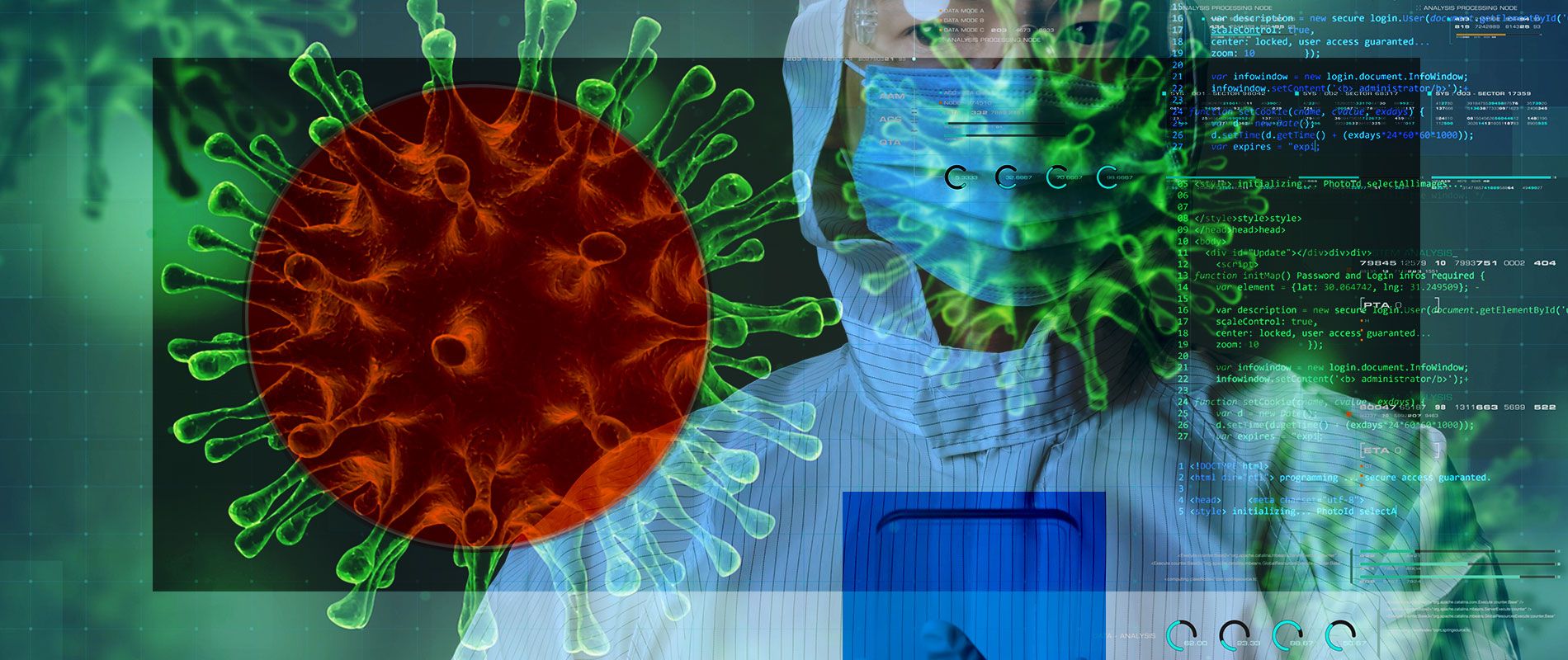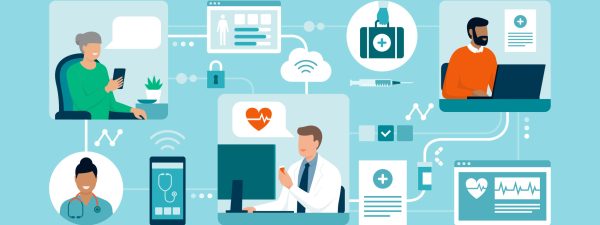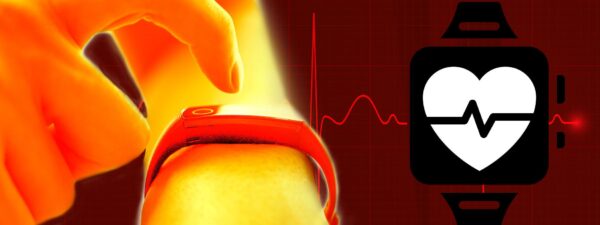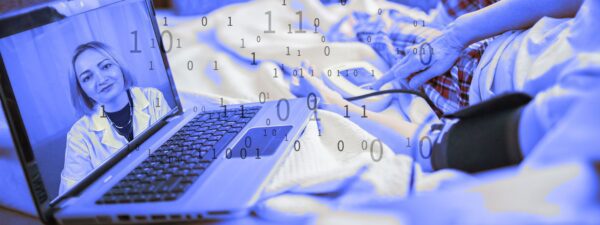Most would agree that the Internet of Things (IoT) is one of the greatest technological revolutions of our time. This is even more true during the post-pandemic future we all face.
Let’s look at how IoT applications are being integrated into healthcare and saving lives during the pandemic:
- Real-time Patient Monitoring
IoT devices can be used for remote patient monitoring to track vital signs such as heart rate, blood pressure, respiratory rate and body temperature. These devices ensure constant monitoring of patients at their homes. This can prove particularly useful for patients who require hospitalization for a short time but don’t need round-the-clock medical supervision. This means hospitals remain less congested, especially during pandemic and post-pandemic times.
- Telemedicine
Telemedicine can be used to carry out remote patient diagnoses, consultations, and treatments via electronic communications. IoT essentially enables live data transmission between patients and doctors or other care providers using communication channels such as the Internet or mobile phones.
- Emergency Care
IoT devices can also be integrated with emergency response systems that can detect health emergencies when they occur and then notify the nearest ambulances. This ensures faster emergency response times and helps save more lives in critical situations.
- Wearable Devices
Wearables – such as smartwatches and fitness trackers – represent one of the most effective ways of remotely monitoring a patient’s health. These wearables allow patients to remotely share data regarding their vitals with medical professionals.
Never in Vein: Benefits of the IoT during a pandemic
The Internet of Things yields multiple benefits for patients and medical professionals by providing real-time patient data to doctors and health workers from remote locations. Indeed, the IoT is making an impact on the healthcare industry in various ways, including:
- Remote patient monitoring
The quality of remote patient monitoring systems has improved immensely over the past few years. These devices facilitate continuous data collection and even help in the diagnosis, treatment, and recovery of patients from the comfort of their homes.
- Contactless treatment
IoT devices used for remote patient monitoring can also be used for the contactless treatment of patients who are suffering from chronic conditions. Healthcare professionals can remotely monitor and control these devices to adjust them based on a patient’s condition.
The IoT is also on the front lines when it comes to helping people get tested for COVID and other diseases. Essentially, IoT makes it easier for people to test at home or even on the go, which can help contain disease transmission and outbreaks.
- Real-time Tracking
IoT devices can also be used to track patients, hospital equipment, and medical staff in real-time to ensure effective management of resources during pandemic and post-pandemic times.
The IoT also helps to automate public health reporting systems – such as contact tracing for COVID – that keep track of outbreaks in real-time. This can allow health and government officials to deploy resources in a more timely manner.
The global pandemic has shined a necessary spotlight on healthcare systems around the world, reflecting where improvements need to be made. In response, the IoT continues to help providers identify potential problems and make adjustments accordingly.
Patients are a virtue
Integrating IoT solutions in the healthcare industry during the pandemic and post-pandemic era, specifically, has yielded a number of benefits, including:
- Increased Efficiency
IoT devices increase the efficiency of care delivery through better planning, coordination, and management in healthcare organizations. In addition, IoT can offer physicians pattern recognition and predictive analysis tools that not only will make their jobs easier but significantly reduce errors as well.
- Improved Patient Experience
In addition to offering increased safety and efficiency, IoT in healthcare improves the patient experience. With IoT technology such as virtual reality (VR) headsets and augmented reality (AR) apps, patients can get immediate access to information about their health conditions through visuals and simulations.
Rx for insecurity: The downside of IoT in healthcare
Although there are plenty of benefits and excellent results from integrating IoT solutions in the healthcare industry, it also comes with some challenges and downsides. These include:
- Risk of Patient Privacy
The healthcare industry is a primary target for hackers because of the large amounts of sensitive patient data it holds. Cyber attackers can steal this healthcare data, which – believe it or not – can be sold on the dark web for a high price. These cybercriminals can also delete or encrypt data to hold healthcare organizations’ systems hostage. These types of attacks can compromise patient privacy and even delay patient care.
- Network Insecurity
Viruses, malware, and hackers can disrupt services when health data is stolen or destroyed. This can negatively impact patient care and increase costs for hospitals and other health care facilities.
- Equipment Failure
As hospitals scale to increase the availability of beds, staff may not be able to regularly monitor equipment or promptly install software updates. This squeeze on hospital staff will inevitably lead to more medical device failures, which will mean more healthcare-associated infections (HAIs).
Diagnosis: IoT to the rescue
The emergence of the IoT has changed healthcare in ways we never could have imagined before a global pandemic descended upon us. And while IoT-enabled healthcare devices come in many different forms, they all share the same end goal: to improve and streamline patient care. That’s an easy pill to swallow.




